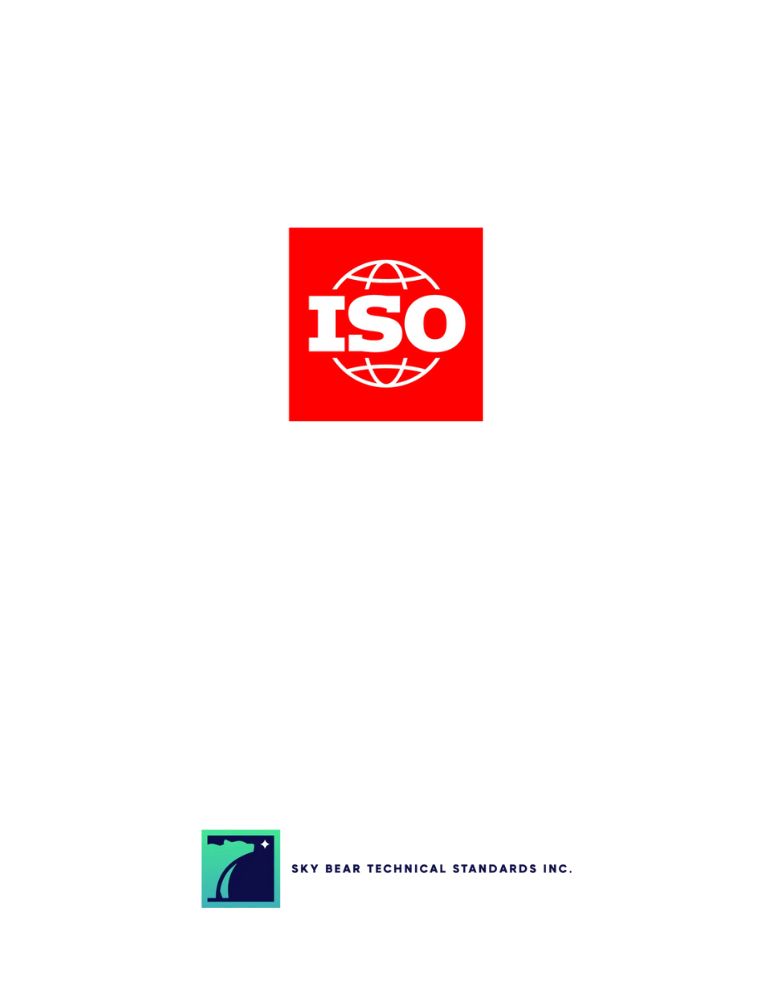Your cart is currently empty!

ISO 10744:1997
ISO 10744:1997 Information technology – Hypermedia/Time-based Structuring Language (HyTime)
CDN $390.00
Description
This International Standard defines a language and underlying model for the representation of “hyperdocuments” that link and synchronize static and dynamic (time-based) information contained in multiple conventional and multimedia documents and information objects. The language is known as the “Hypermedimime-based Structuring Language”, or “HyTime”.
HyTime can represent time in both the abstract, or “musical” sense, and in user-defined real-time units. It also provides a way of relating the two so that elements of time-dependent documents can be synchronized.
NOTE 7 This facility extends to the representation of multimedia information the power, once limited to conventional documents, to distinguish intrinsic information content from style considerations.
HyTime’s techniques for representing its time model are equally applicable to spatial and other domains; all are treated as systems for measuring along different axes of a coordinate space. Arbitrary cross-references and access paths based on external interactions (“hypermedia links”) are also supported.
HyTime’s time representation contains sufficient information to derive the durations of both control (“gestural”) data (e.g., control information for audio or video hardware) and visual data (e.g., a music score, presentation storyboard, or television script).
The media formats and data notations of objects in a HyTime hyperdocument can include formatted and unformatted documents, audio and video segments, still images, and object-oriented graphics, among others. Users can specify the positions and sizes of occurrences of objects in space and time, using a variety of measurement units and granularities Temporal requirements of applications ranging from animation to project management can be supported by choosing appropriate measurement granules.
NOTE 8 This International Standard does not address the representation of audio or video content data, but simply defines the means by which the start-time and duration of such data can be synchronized with other digitized information. Nor does it specify the layout process by which occurrences of unformatted documents and other information objects can be made to fit the positions and sizes specified for them.
HyTime is an enabling standard, not an encompassing one. AS a result, the objects comprising a HyTime hyperdocument are free to conform to any application architectures, or to document architectures imposed by standards, and to be represented in any notation permitted by those architectures Only the “hub document”, which may determine the hyperdocument membership, must conform PO HyTime in addition to any other architectures to which it may conform.
HyTime is designed for flexibility and extensibility. Optional subsets can be implemented, alone or in conjunction with user-defined extensions.
The Hypermedia/Time-based Structuring Language (HyTime) is an SGML application conforming to International Standard IS0 8879 – Standard Generalized Markup Language.
The hyperdocument interchange format recommended in this International Standard is IS0 9069, the SGML Document Interchange Format (SDIF). SDIF is defined in Abstract Syntax Notation 1 (ISO/IEC 8824) and can be encoded according to the basic encoding rules of ISOAEC 8825 for interchange using protocols conforming to the Open Systems Interconnection (OSI) model. Other interchange formats can also be used.
Edition
2
Published Date
1997-09-04
Status
PUBLISHED
Pages
468
Format 
Secure PDF
Secure – PDF details
- Save your file locally or view it via a web viewer
- Viewing permissions are restricted exclusively to the purchaser
- Device limits - 3
- Printing – Enabled only to print (1) copy
See more about our Environmental Commitment
Abstract
This International Standard defines a language and underlying model for the representation of “hyperdocuments” that link and synchronize static and dynamic (time-based) information contained in multiple conventional and multimedia documents and information objects. The language is known as the “Hypermedimime-based Structuring Language”, or “HyTime”.
HyTime can represent time in both the abstract, or “musical” sense, and in user-defined real-time units. It also provides a way of relating the two so that elements of time-dependent documents can be synchronized.
NOTE 7 This facility extends to the representation of multimedia information the power, once limited to conventional documents, to distinguish intrinsic information content from style considerations.
HyTime’s techniques for representing its time model are equally applicable to spatial and other domains; all are treated as systems for measuring along different axes of a coordinate space. Arbitrary cross-references and access paths based on external interactions (“hypermedia links”) are also supported.
HyTime’s time representation contains sufficient information to derive the durations of both control (“gestural”) data (e.g., control information for audio or video hardware) and visual data (e.g., a music score, presentation storyboard, or television script).
The media formats and data notations of objects in a HyTime hyperdocument can include formatted and unformatted documents, audio and video segments, still images, and object-oriented graphics, among others. Users can specify the positions and sizes of occurrences of objects in space and time, using a variety of measurement units and granularities Temporal requirements of applications ranging from animation to project management can be supported by choosing appropriate measurement granules.
NOTE 8 This International Standard does not address the representation of audio or video content data, but simply defines the means by which the start-time and duration of such data can be synchronized with other digitized information. Nor does it specify the layout process by which occurrences of unformatted documents and other information objects can be made to fit the positions and sizes specified for them.
HyTime is an enabling standard, not an encompassing one. AS a result, the objects comprising a HyTime hyperdocument are free to conform to any application architectures, or to document architectures imposed by standards, and to be represented in any notation permitted by those architectures Only the “hub document”, which may determine the hyperdocument membership, must conform PO HyTime in addition to any other architectures to which it may conform.
HyTime is designed for flexibility and extensibility. Optional subsets can be implemented, alone or in conjunction with user-defined extensions.
The Hypermedia/Time-based Structuring Language (HyTime) is an SGML application conforming to International Standard IS0 8879 - Standard Generalized Markup Language.
The hyperdocument interchange format recommended in this International Standard is IS0 9069, the SGML Document Interchange Format (SDIF). SDIF is defined in Abstract Syntax Notation 1 (ISO/IEC 8824) and can be encoded according to the basic encoding rules of ISOAEC 8825 for interchange using protocols conforming to the Open Systems Interconnection (OSI) model. Other interchange formats can also be used.
Previous Editions
Can’t find what you are looking for?
Please contact us at:
Related Documents
-

ISO 14416:2003 Information and documentation – Requirements for binding of books, periodicals, serials and other paper documents for archive and library use – Methods and materials
0 out of 5CDN $273.00 Add to cart -

ISO 4006:1991 Measurement of fluid flow in closed conduits – Vocabulary and symbols
0 out of 5CDN $351.00 Add to cart -

ISO 80004:2020 Nanotechnologies – Vocabulary – Part 8: Nanomanufacturing processes
0 out of 5CDN $76.00 Add to cart -

ISO 2382:2015 Information technology – Vocabulary
0 out of 5CDN $0.00 Add to cart






